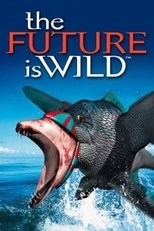
Welcome to the Future
Episode 1 • Apr 02, 2002
The opening episode serves as an introduction to the series, featuring many clips from later episodes and giving an overview of the series. It opens by discussing which animals (such as the big cats and bears) will disappear in a few thousand years and explains that evolution will continue. It is also the only episode to touch upon the absence of humans in the future. It does not, however, explain what will have happened to the human race. The creators said that it was up to the viewers to make their own assumptions about the fate of mankind.

